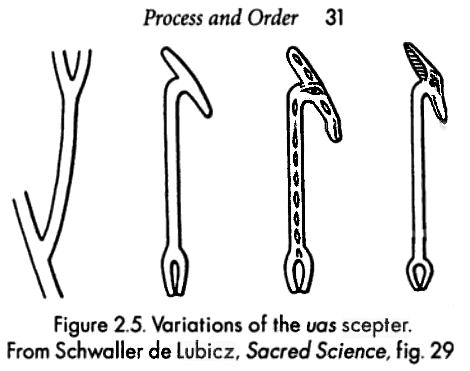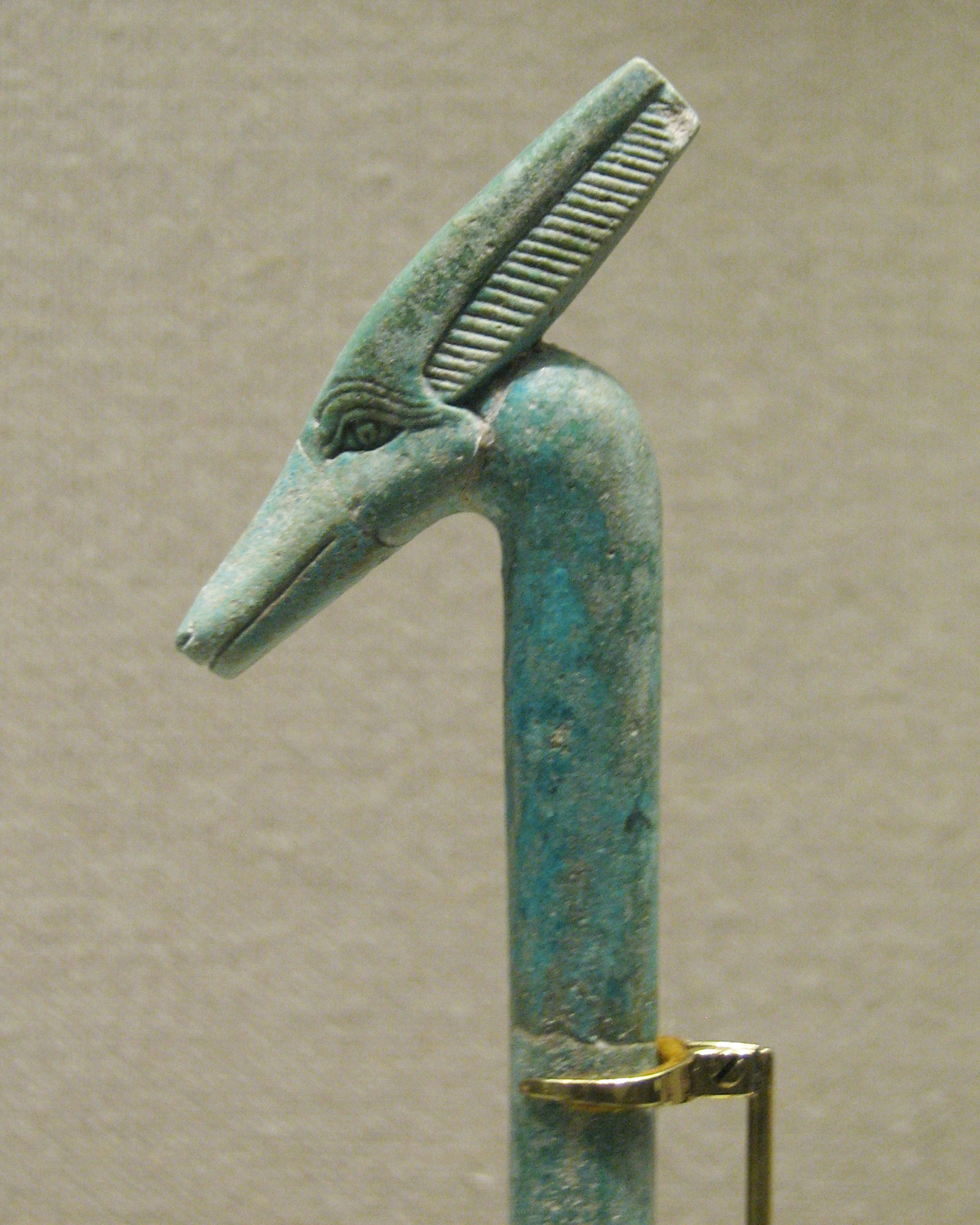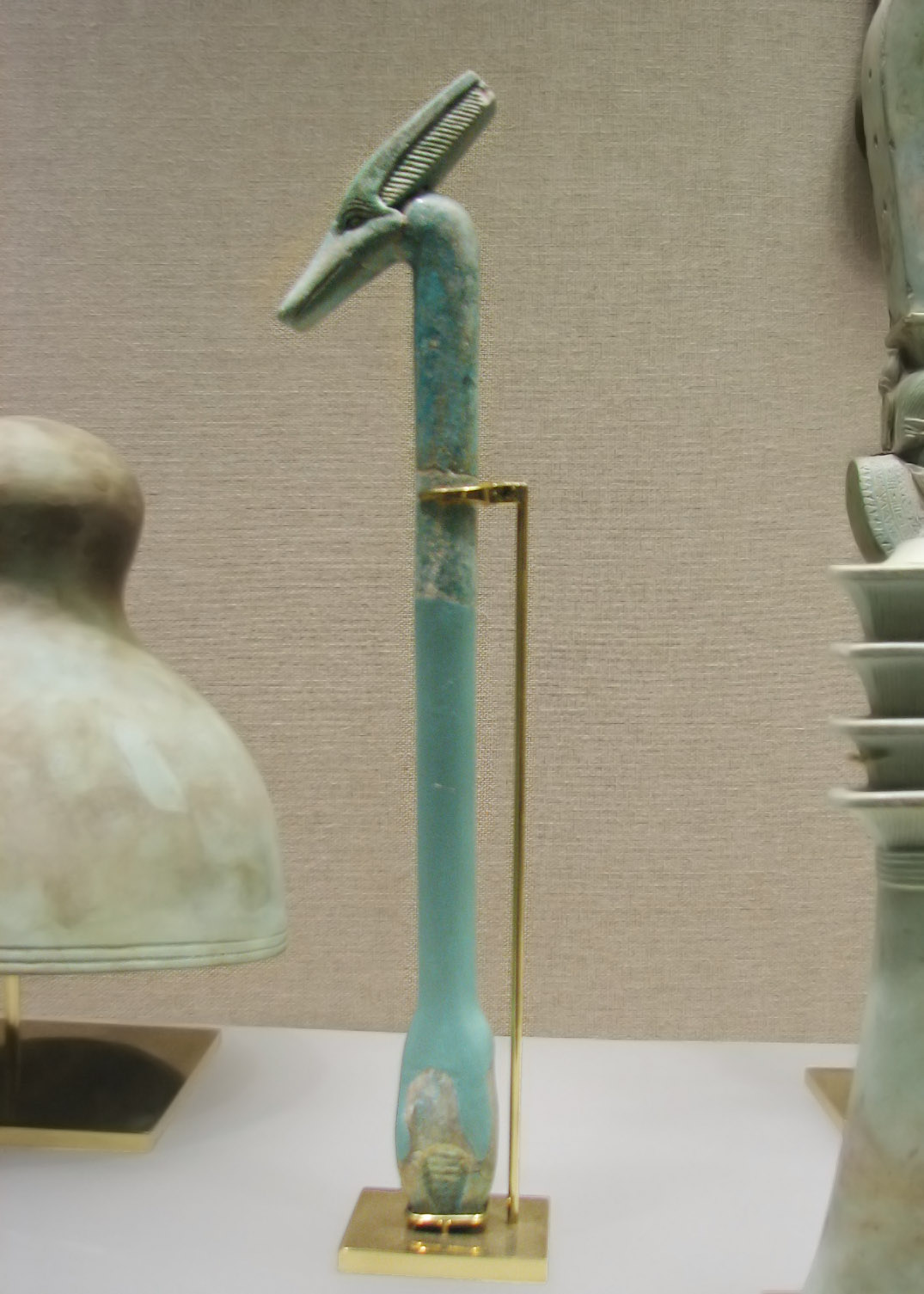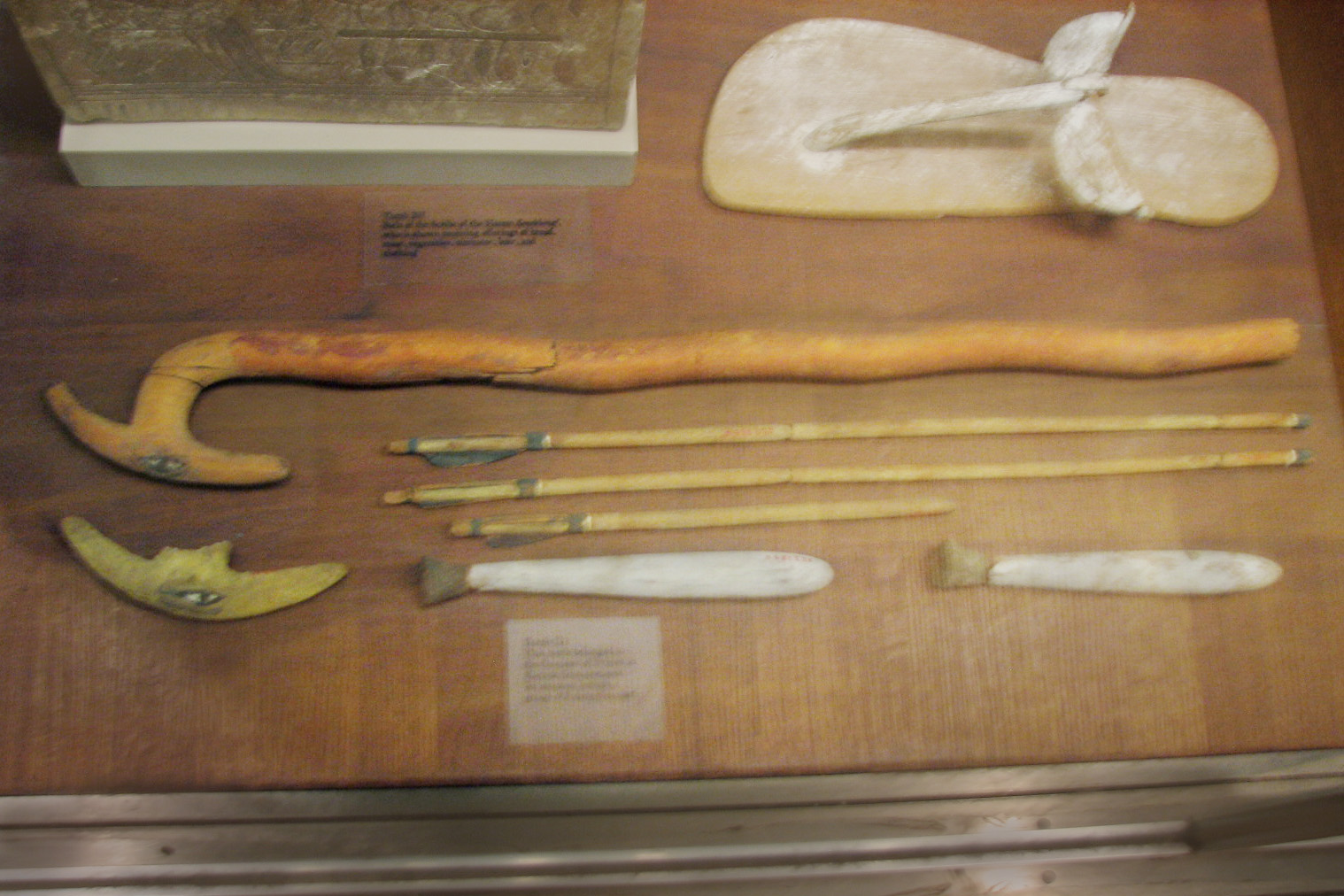
"An interesting point is that the bull's leg, like the was-sceptre to be discussed below, seems to have played a part in the local cult of Seth. Both in Ombos and in Sepermeru Seth bears the epithet "Powerful of forefoot"." (page 89)

"The spiral shaft of the djam-sceptre might be an imitation of lightning."(page 90)
Furthermore, TeVelde says,
"Gardiner holds that the head of these sceptres is probably the head of the Seth-animal. Wainwright drew attention to the special relation between these divine scepters and the god Seth. The nome sign of Oxyrhynchus, that was one of the nomes of Seth, consists of two was-sceptres, and an enormous was-sceptre was found in the temple of Seth at Ombos. Besides their function as sceptre in the hand of gods, was-sceptres serve to hold up the sky. As supporter of the sky Seth is appealed to in a prayer by Rameses II." (page 90)
De Lubicz via Paul LaViolette speaks of the was as "a living branch that conducts nourishing, vivifying sap, fluid that ascends..." and even found some was scepters "made from the living branch of a tree that had been cut so as to include a section of the lower source brance as well as two offshoots coming from its upper end (figure 2.5)". (Genesis of the Cosmos, page 30)

I'm not sure how they were formed, but the Metropolitan museum has wooden was scepter fragments:
|









